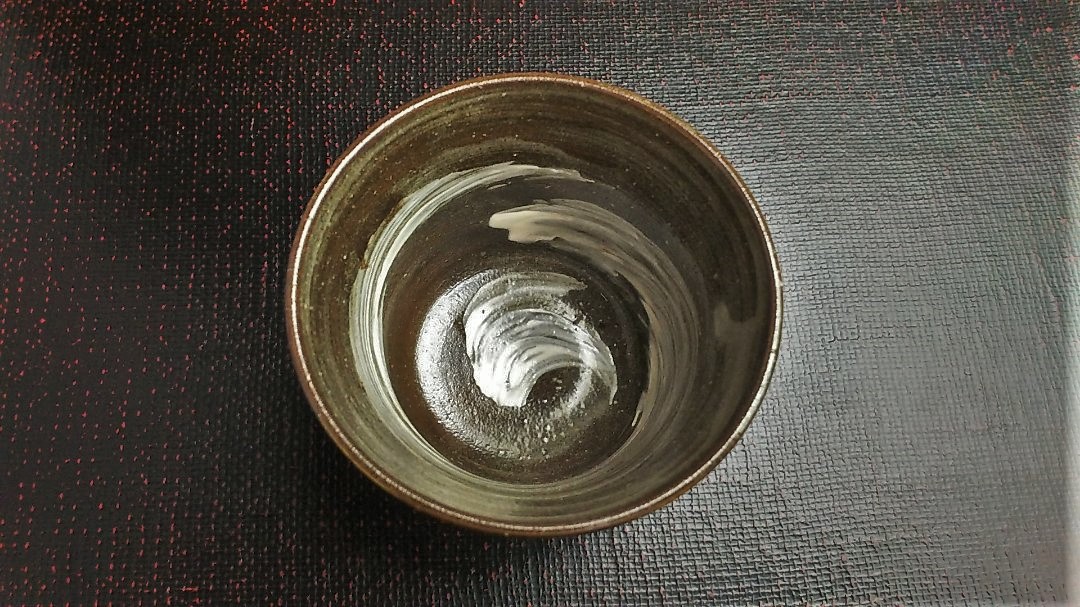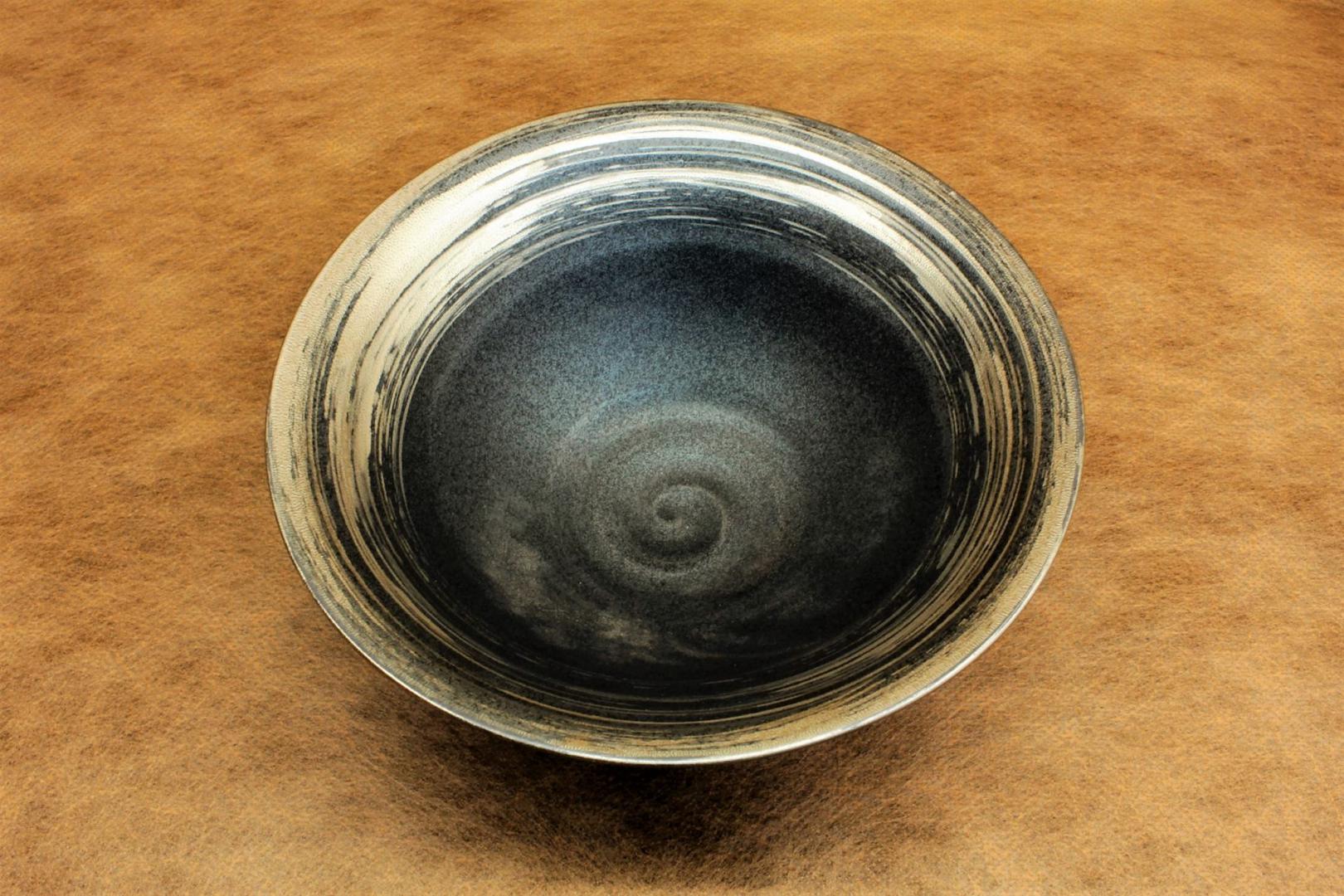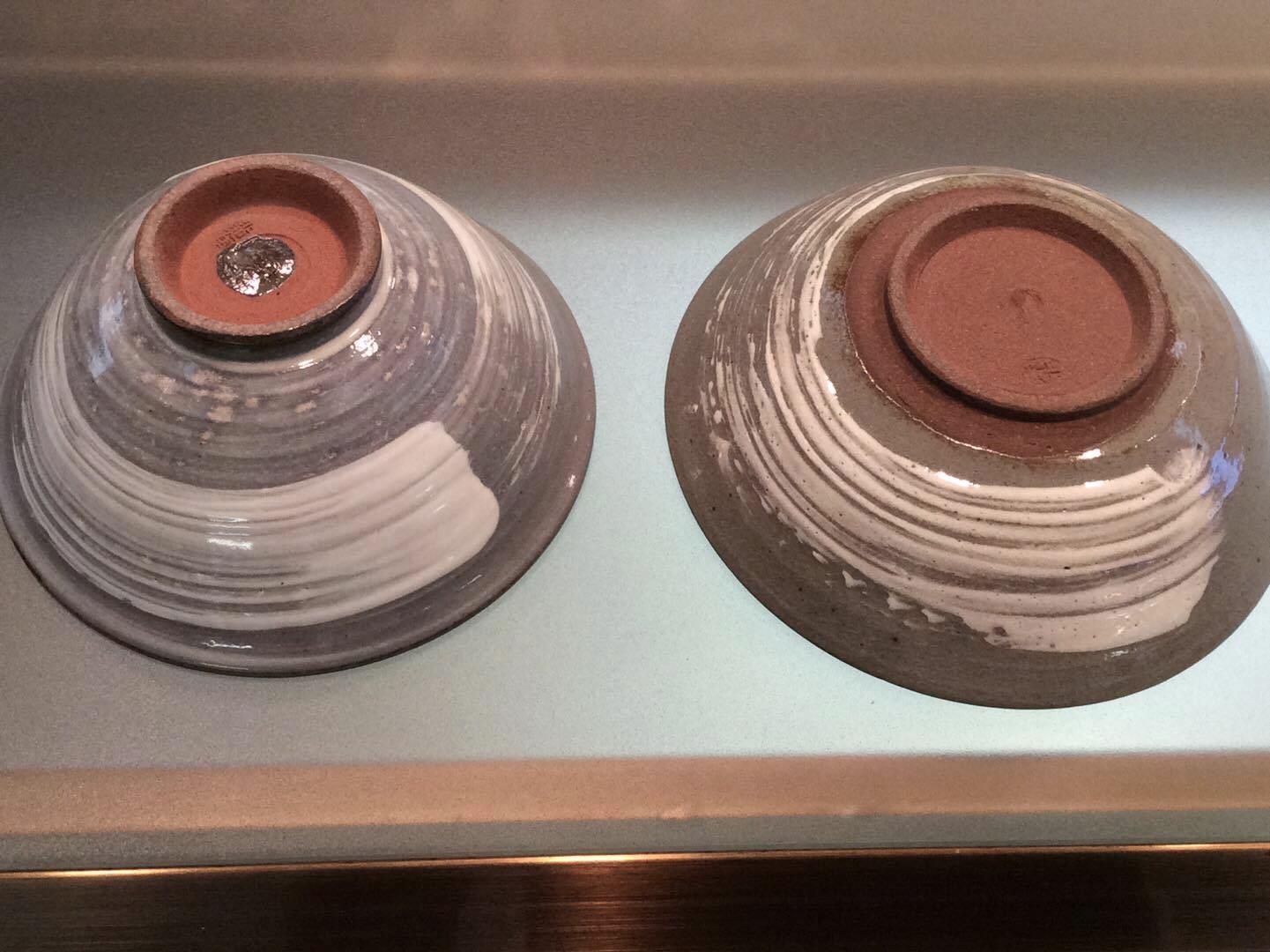


HAKEME_3.jpeg
Hakeme_2.jpeg
Hakeme_1.jpeg
陶磁器の技法
刷毛目
Hakeme is one of the representative techniques of decorating ceramics, that coats a clay body with a white slip. The glaze is then put on the piece. The contrast of the original color of the clay and the white glaze is beautiful.
The wild touch of the firm brush is also appealing. Each Hakeme product is a one and only piece. Please enjoy the uniqueness of each Hakeme design.
染付
Sometsuke is one of the representative painting techniques that puts clear glaze on white clay pieces that are painted with Gosu (cobalt blue paint). In China, it is called Seika (blue flower). Sometsuke is also called Shitae (underglaze painting) in Japan. Uwae (overglaze painting) puts the paint over the glazed pottery. In contrast, for Shitae the paint is made before the glaze is added.
In general, Sometsuke is made for porcelain; however, sometimes it is made for pottery. The indigo color of Gosu varies depending on the producing area and studio.
三島手
Mishimade is one of the decoration techniques originating in Korea. This technique is also referred to as Zogan. After forming it, a potter incises the design, which may be floral, animal depictions, or geometrical, in the body, and fills it in with colored clay. Unnecessary clay is removed from the surface, and then the underlying design appears. Finally, the potter adds a transparent glaze over the body. The technique was brought to Japan in the Muromachi period, which is when the Japanese tea ceremony became popular. As a result, Mishimade became popular among tea ceremony lovers. Depending on how the white clay is covered, as well as the kind of clay used for the body, the look of the finish varies but is always beautiful. The name of the technique comes from the Mishima shrine because the white and black pattern looks similar to the characters in the calendar published by the shrine.
粉引
Kohiki style was developed during the Yi Dynasty in Korea and was brought to Japan during the 16th century.
Kohiki was named so because the appearance is like white powder (Kona) spread on ceramics. The Kohiki style has a soft texture and provides a warm feeling. Kohiki is used for various occasions from daily use to the classic tea ceremony.
織部
Oribe ware is a part of Mino ware and uses green glaze, which consists mainly of bronze. Oribe is not a name of the producing area but the name of the tea master, Oribe Furuta, the pupil of the legendary tea ceremony master, Sen no Rikyu.
One of the characteristics of Oribe ware is the brilliant green color generated by the oxidation flame method—the flame is produced with an excessive amount of oxygen. The strong appearance of these pieces fits anywhere from home dining to high-end restaurants.
志野
Shino ware is also a part of Mino ware, like Oribe ware, and was developed during the Azuchi-Momoyama period. Shino ware has been popular to use at tea ceremonies. It has many variations such as Nezumi-Shino, E-Shino, and Aka-Shino. The warm, white color generated by the glaze, Feldspathic glaze, and the scarlet color generated by fire create a tasteful contrast. The creamy white color provides a contradictory impression of elegance and friendliness, which is why Shino ware is used in various occasions.
唐子絵
Karakoe became popular during the Tang Dynasty in China, and was brought to Japan in the Edo period. In Japanese, Kara means Tang and Ko means children. The design is a scene of children holding fans, innocently playing with butterflies around a peony, under pine trees. The children’s smiles are drawn in a charming way. Karakoe was a designated design of Mikawachi ware by the Hirado Domain, and it was a tribute to the Imperial Court and the feudal government. Depending on social status, the number of children allowed to be drawn on the tableware was specified. For Shogun’s tableware, seven children were drawn, and it was called “Tribute Karako.” For the court nobles and the feudal lords, five children were drawn. For the public, three children were allowed to be drawn. The Karakoe design is also known as auspicious, representing the prosperity of descendants and longevity.